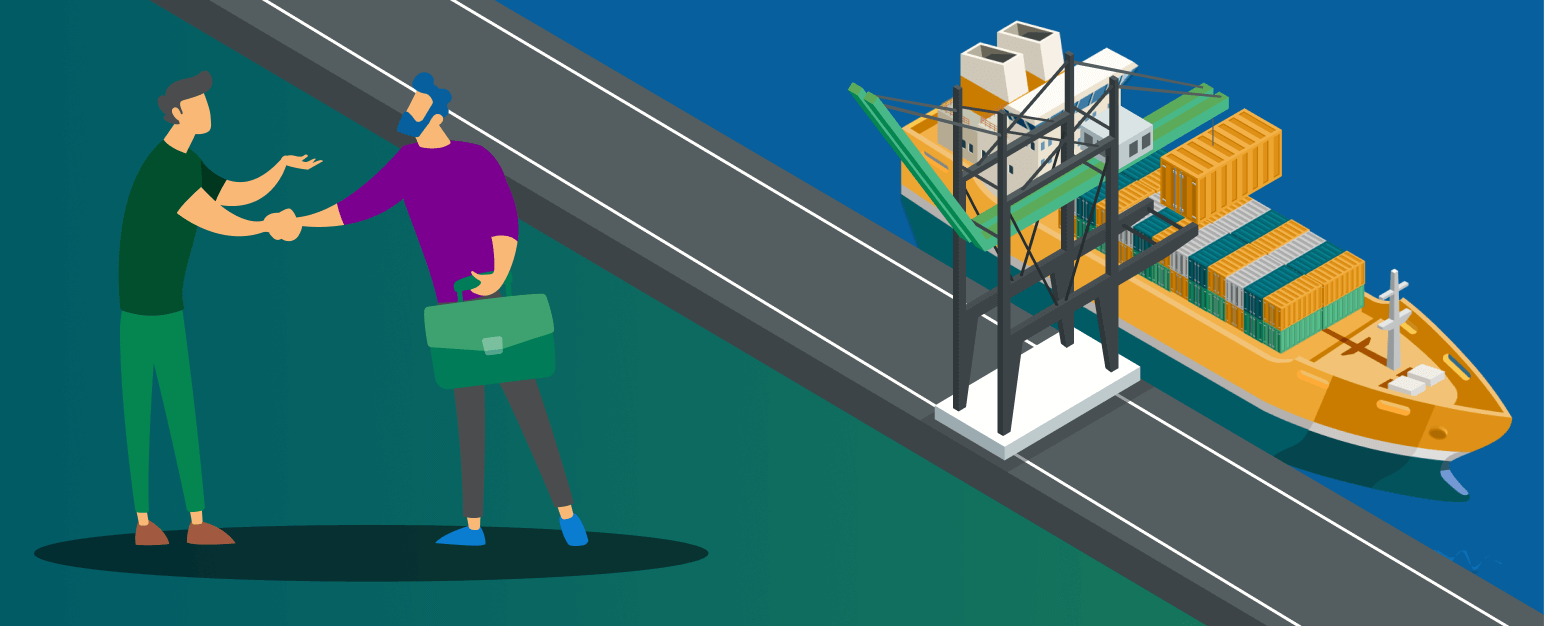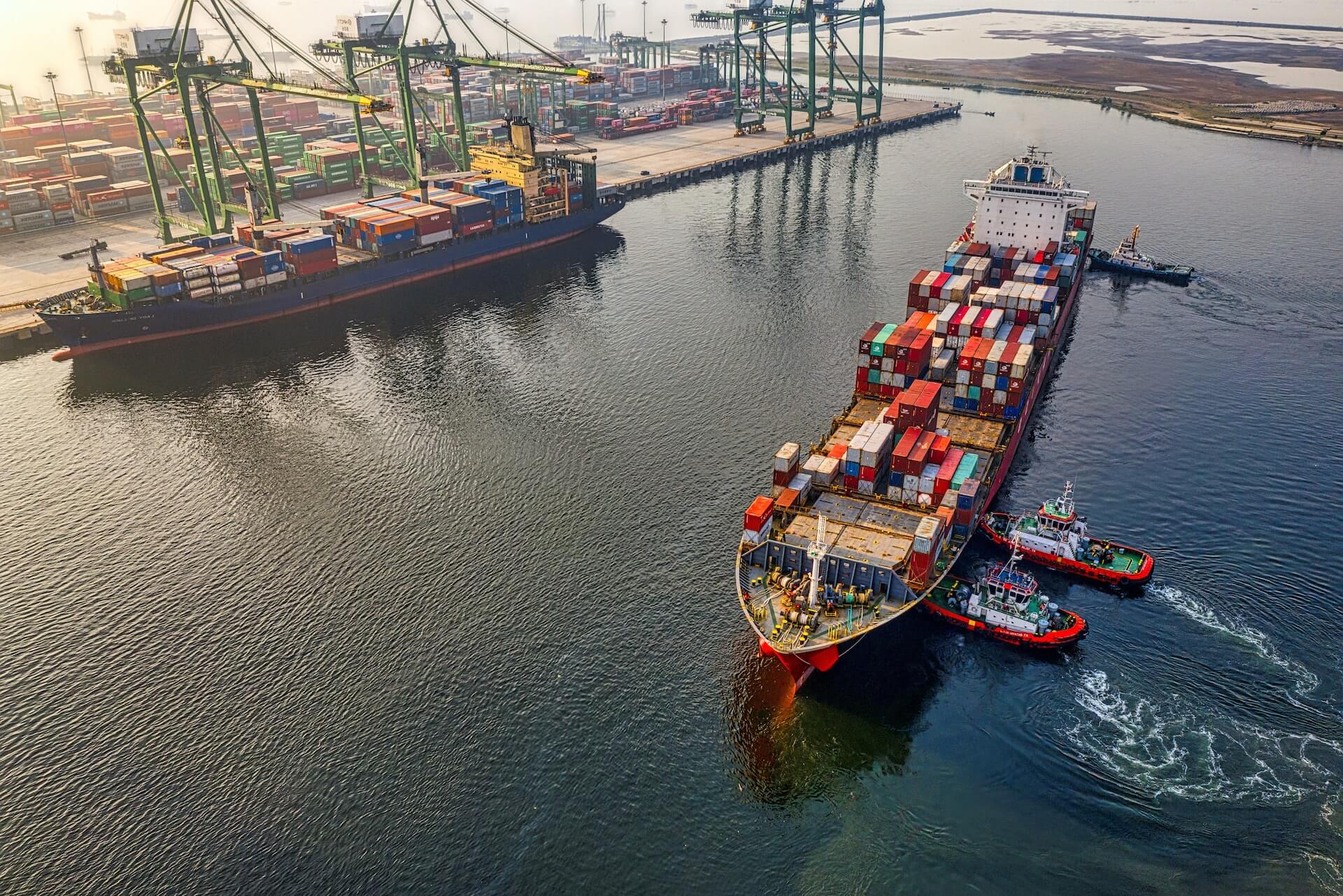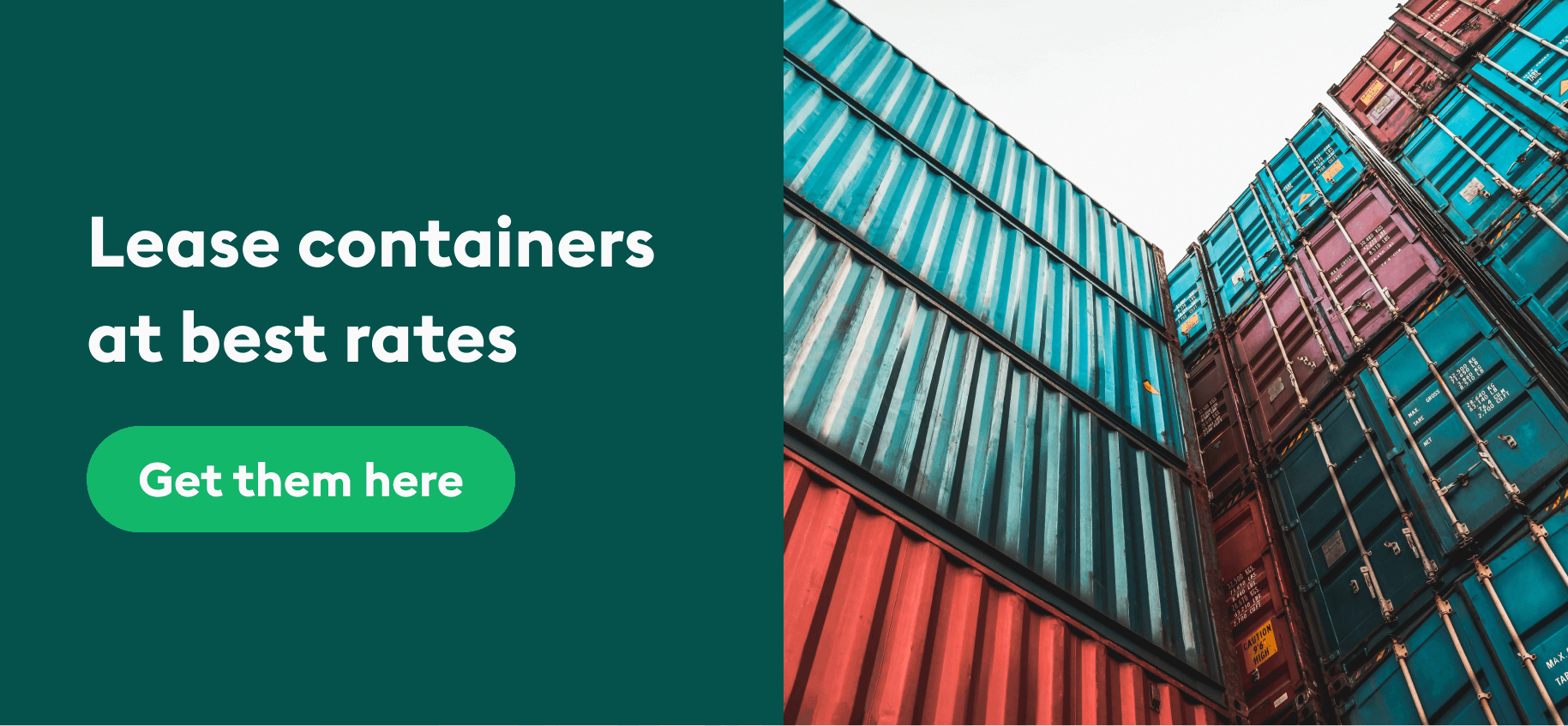Shipping alliances enable carriers to share their resources effectively. Read this blog to learn about the new alliance formed by HMM, ONE and Yang Ming. We’ll also discuss the Gemini Cooperation and the end of the 2M Alliance.
In the shipping industry, low pricing and wide service coverage are two important elements that carriers must offer to make their business profitable. To facilitate this, three major shipping alliances (2M, THE Alliance and Ocean Alliance) were formed. Shipping alliances allow carriers to increase their customer base globally and offer low prices.
In January 2023, two major carriers, Maersk and MSC, called off their 2M Alliance, and will completely separate their operations by 2025. Almost a year later, Maersk and Hapag Lloyd announced their groundbreaking alliance all set to come to fruition in 2025. Recently, Ocean Network Express (ONE), HMM and Yang Ming Marine Transportation (Yang Ming) announced that they will cooperate closely under the new Premier Alliance for 5 years from February 2025.
Keep reading to learn more about this new operational collaboration. But before that, if you’re interested in keeping yourself up-to-date with major events in the industry – such as the latest shipping alliances – we’ve got the perfect solution for you.
At Container xChange, we publish container logistics reports every month. Here, you’ll have access to the latest news and insights, as well as how these could impact your container operations. Click on the banner below to download the full report today.
What are shipping alliances?
A shipping alliance, often referred to as an ocean alliance, is a group of ocean carriers that create a cooperative agreement together. This agreement covers several trade routes through collaboration among its members on a global scale.
These groups of carriers commit to vessel-sharing agreements to help cover as much of the shipping market as possible. This means they gain access to vessels owned by other carriers. Often, carriers also agree to move containers on behalf of one another.
Shipping alliances allow carriers to create a monopoly over the ocean shipping market. Based on Alphaliner’s ranking of all the shipping lines, the 3 major alliances collectively account for 80% of the global container market. Leaving just 20% for the other smaller global/regional carriers.
Let’s learn more about these 3 major alliances, as well as the newest cooperation starting in 2025.
Major global shipping alliances
Here’s an overview of the current major shipping alliances, and the changes that will be taking place over the next year:
|
Major shipping alliances 2024/2025 |
||
| Alliance | Members | Details of alliance |
| Premier Alliance |
HMM, ONE, & Yang Ming | This new alliance will begin in February 2025. The three partners are currently members of THE Alliance along with Hapag-Lloyd. After this, MSC will work alone. |
| Gemini Coopera-tion | Maersk & Hapag Lloyd | Will begin in January 2025, when Maersk will step away from the 2M alliance, and Hapag Lloyd will leave THE Alliance. |
| 2M | MSC & Maersk | Formed in 2015 to ensure competitive and cost-efficient operations. This alliance comes to an end in 2025. |
| Ocean Alliance | CMA-CGM, Cosco Group, OOCL and Evergreen | Formed in 2017 and renewed for 10 years ending in 2027. Recently extended again until 2032. The alliance has 330 ships, out of which 111 ships are operated by CMA CGM. The alliance has a capacity of 3.8 million TEUs. |
| THE Alliance | Hapag Lloyd, NYK, Yang Ming, MOL, K-Line, HMM | Also launched in 2017, THE Alliance has 241 ships calling more than 1,150 ports and covering 3.3 million TEUs. With the new Gemini Cooperation forming in January 2025, Hapag Lloyd will be leaving THE Alliance next year. HMM, ONE, & Yang Ming will form the Premier Alliance in 2025. |
Premier Alliance: HMM, ONE and Yang Ming (February 2025)
HMM, Ocean Network Express (ONE), and Yang Ming Marine Transportation announced their plans to collaborate in liner trades under the new Premier Alliance, which will run for 5 years starting in February 2025.
Currently, these three companies are part of THE Alliance alongside Hapag-Lloyd. Earlier this year, Hapag-Lloyd announced it would join Maersk in the new Gemini Cooperation starting in January 2025. Hapag-Lloyd’s decision came after Maersk and MSC announced the end of their 2M alliance in 2023.
Following the recent container alliance changes, MSC will be operating independently.
The Premier Alliance members will operate on key East-West routes, connecting Asia to the North America West Coast, North America East Coast, the Mediterranean, North Europe, and the Middle East. They provided an updated overview of their services across these trade lanes in their official press release.
In addition, the group revealed a slot exchange agreement with MSC for nine Asia-Europe services, as MSC prepares to operate outside of the 2M alliance.
“Collectively this new tripartite alliance will offer strong, reliable and highly dependable end-to-end direct port container services to its customers on both the Transpacific and Asia-Europe trades” announced Jeremy Nixon, the CEO of ONE.
Gemini Cooperation: Maersk and Hapag Lloyd (January 2025)
Shipping powerhouses Maersk and Hapag Lloyd announced the signing of a long-term operational collaboration – the Gemini Cooperation – starting February 2025.
This new partnership between the world’s second and fifth-largest shipping companies will consist of 290 ships with a total capacity of 3.4 million TEUs. Maersk will operate 60% of this capacity, and Hapag Lloyd the other 40%.
The Gemini Cooperation will cover:
- Asia and North Europe
- Asia and the Mediterranean
- Asia and the Middle East
- The Middle East to India and Europe
- Asia and the US East Coast
- Asia and the US West Coast
- The Transatlantic
The goal is for ships to reach ports on time for at least 90% of departures. Besides this, the shipping lines believe this alliance will make it easier for them to reduce CO2 emissions from their ships.
What’s the Impact of the Gemini Cooperation on other shipping alliances?
There’s no doubt that the new cooperation will leave other shipping companies seeking out new partnerships. This is especially true for the remaining members of THE Alliance; Ocean Network Express (ONE), HMM and Yang Ming.
Simon Sundboell, founder of consultancy eeSea, said on a LinkedIn post; “Hapag-Lloyd, whose capacity is nearly 1.98 million TEUs, is the largest of THE Alliance’s members, and the grouping will not survive without it.”
With the exit of Hapag Lloyd, THE Alliance will have about 3.3 million TEUs. The newly formed Gemini Cooperation will be slightly ahead with 3.4 million TEUs. This makes the Ocean Alliance the largest group, with 8.3 million TEUs.
With a deduction of 1.98 million TEUs, THE Alliance is sure to be scrambling to find new members as soon as possible.
Sundboell further states, “Even CMA CGM and Cosco will be looking over their shoulders in Ocean; do they want to snap up the remaining THE Alliance carriers, and if so what’s ‘the price’?”
With the recent extension of the Ocean Alliance until 2032, any speculation about this partnership breaking up has been put to rest, as they’ll be working together for the foreseeable future.
2M Alliance: Maersk and MSC (terminating 2025)
The 2M Alliance was formed in 2015 between Maersk and Mediterranean Shipping Co (MSC). The cooperation covered the Asia-Europe, trans-Pacific and trans-Atlantic trade routes. The HMM also joined 2M in 2017 for a three-year partnership, but later teamed up with THE Alliance instead.
End of 2M Alliance and its impact
In January 2023, Maersk and MSC jointly announced their discontinuation of the alliance by 2025. The announcement of 2M’s termination may signal the beginning of a broad industry-wide restructuring of current operational contracts, particularly on the important east-west trades.
So how does this discontinuation affect others in the shipping industry? Both companies together control about one-third of the world’s container capacity. What’s more, they have over 4 million TEUs independently.
- For starters, it’ll create more competition between Maersk and MSC. Freight forwarders may notice a fall in shipping rates, as both companies compete more directly in the Asia-Europe, Transatlantic and Transpacific trade routes.
- Similarly, if you’re a customer of Maersk or MSC, you may also notice some positive changes in the services offered in the coming years – aiming at retaining and attracting more customers.
- Experts also believe that both companies will have to increase their ocean fleet to keep up with their customer’s demands and ensure smooth cargo transportation.
Ocean Alliance: COSCO, OOCL, CMA CGM & Evergreen
The Ocean Alliance was launched in 2017 for an initial period of five years between COSCO Shipping, OOCL, CMA CGM, and Evergreen. In 2019, the companies confirmed an extension of the alliance to ten years (until 2027). In February, 2024, the alliance announced a further five year extension, starting from 2027.
The Ocean Alliance includes 330 container ships and an estimated carrying capacity of 3.8m TEUs. This alliance also has Ever ACE, the largest mega ship with a capacity of 23,992 TEUs.
Ocean Alliance offers 38 different services including 19 transpacific services, 11 services between Asia and Europe (and the Mediterranean), and 4 services between Asia and the Middle East.
THE Alliance: Hapag-Lloyd, ONE, and Yang Ming
Launched in 2017, THE Alliance combines 3.5 million TEUs. That’s approximately 25% of the global container capacity. On top of that, THE Alliance has also revealed that it will deploy a fleet of 249 ships.
They will connect 76 ports throughout Asia, North Europe, the Mediterranean, North America, Canada, Mexico, Central America, the Indian Subcontinent, and the Middle East.
In 2019, they optimized port-pair connections to accommodate customers’ needs for greater reliability and stability in service quality. In April 2020, HMM from South Korea joined THE Alliance and increased its total capacity by 519,000 TEUs. Thus, THE Alliance’s global market share went from 25% to 30%.
In September 2024, HMM, Ocean Network Express (ONE), and Yang Ming Marine Transportation announced their plans to collaborate in liner trades under the new Premier Alliance starting from February 2025.
With the Gemini Cooperation between Maersk and Hapag Lloyd in 2025, Hapag Lloyd will also no longer be part of THE Alliance.
With the Gemini Cooperation between Maersk and Hapag Lloyd in 2025, Hapag Lloyd will no longer be part of THE Alliance.
Impact of shipping alliances on global container market
Being part of the shipping industry, you must have wondered how these alliances affect the global container market. Plus why do major shipping companies form alliances with each other? To help you understand this, let’s take a look at the operating cost of carriers.
Operational costs account for more than 67% of a shipping line’s total operating costs. Of this, 21% is related to port taxes, and 46% is related to bunker prices, both of which are variable costs.
Using shared resources like ships, port facilities, and networks along certain routes is the most effective way for shipping lines to reduce these variable costs. It’s one of the key reasons why they form shipping alliances and vessel-sharing agreements.
Another important feature of an ocean alliance is its inherent impact on carriers – they’re able to buy mega-ships they might not otherwise be able to own. This allows shipping carriers to not only expand their business but also impact the global economy.
Plus, shipping lines realized they couldn’t cover all of their routes by themselves, especially after the cargo ship crises. Doing so would require them to tie up their ships on one route for weeks while leaving others unattended. And this would affect the entire shipping market.
Entering into shipping alliances helps large shipping lines rationalize their resources. And smaller lines can enjoy extended service coverage without increasing their fleet size.
How do shipping alliances work?
Most of the shipping alliances work pretty much the same way. The main areas of communication and information amongst companies are stowage plans, vessel assignment, scheduling, and problem-solving. However, alliances don’t cover joint sales, marketing, pricing, or the joint ownership of assets, which distinguishes them from other types of partnerships.
They openly discuss how to regulate fuel types, environmental issues, operational efficiencies, and engine failures. Additional elements in each shipping alliance include capacity planning, the contribution of each carrier and specific compensation.
But what do freight forwarders and shippers get out of these alliances? Read on to find out.
What are the benefits of shipping alliances?
We’ve already discussed that shipping alliances help carriers pool their resources and increase their customer base. But how do these alliances affect freight forwarders or shippers in their day-to-day business?
For starters, shipping alliances help carriers facilitate low prices and broad service coverage. With increased competition amongst top shipping lines, you may benefit from better services and lower transportation rates.
For instance, if two carriers offer you the price you want, but one is part of an alliance that features a member with greater predictability, you might choose the carrier that’s in the alliance.
Similarly, if you’re considering two carriers in the same alliance, you can guess that their performance is likely to be the same. You might then make a choice based on the free time offered by each carrier.
Ultimately, shipping alliances provide you with more options, and can help you reduce the shipping costs. Lower prices trickle down to individual customers as well. As a freight forwarder, you can use the reduced cost as an incentive to attract more customers and expand your business. It’s win-win!
Other types of collaborations
Apart from forming shipping alliances, carriers also form other kinds of agreements with each other. Here are the two most common agreements.
Slot charter agreement
A Slot Charter Agreement (SCA) is a contract between two partners/shipping lines who buy and sell a specified number of slots for a certain period of time, in order to widen their coverage.
For example, even though Hapag-Lloyd has its own ships and services on that stretch, they are slot charterers on the MSC route from South Africa to Europe. Slot charterers utilize their own bill of lading, operate as a separate shipping line, and receive their port charges directly from the port.
Vessel sharing agreement
Shipping lines collaborate under what is called a Vessel Sharing Agreement (VSA) to share vessel space and meet the demand on certain trade lanes. Simply put, a Vessel Sharing Agreement is a contract or deal signed between partners of an alliance to run a liner service along specific routes.
The space for each partner may vary from port to port, and depends on the individual input per company. A Vessel Sharing Agreement is limited to a specific trade lane, whereas a shipping alliance is made up of a number of VSAs, and is more global in nature.
How Container xChange can help you with asset sharing
Another form of collaboration between shipping companies is asset sharing. This is where companies share their assets with each other. And that’s something we facilitate on Container xChange – the leading online marketplace for buying, selling and leasing shipping containers.
Did you know that every 3rd container is being moved empty? Every year, moving empty containers costs the industry more than US $20 billion. Now, imagine a world where container owners could find partners to move their containers, while container users find a way to move their cargo one way.
That’s exactly what we do on xChange. If you’re a container owner, you can use our leasing platform to find vetted leasing partners to move your equipment. This way, you don’t have to pay extra for empty container repositioning. The lessor gets to move their cargo to their desired route using a one-way container.
And if you’re looking to move your goods one-way at the best rates and avoid demurrage and detention fees, leasing SOCs from our reputable suppliers is your solution. You’ll be able to increase your flexibility and save cash in the process.
More than 1,500 companies in 2,500+ locations are already using our platform for smoother container operations. Learn how you can use Container xChange to ease your logistics. Click below to talk to one of our experts and get a free tour of our platform today.
Shipping alliances: Common FAQs
What are shipping alliances?
Shipping alliances are a collection of ocean carriers that come together to form a cooperative agreement. The carriers create vessel-sharing contracts and combine their fleets inside each alliance to serve the largest possible portion of the ocean transportation market.
Are shipping alliances great for shippers too?
Yes, shipping alliances can help carriers facilitate low prices and broad service coverage through economies of scale and economies of scope. This can benefit shippers and freight forwarders, allowing them to transport their cargo at lower costs.
What are the three largest shipping alliances?
The three largest shipping alliances are Ocean Alliance (COSCO Shipping, OOCL, CMA CGM, and Evergreen), THE Alliance (Hapag-Lloyd, ONE, and Yang Ming) and 2M alliance (MSC and Maersk). However, the 2M alliance was recently discontinued, and in 2025, the Gemini Cooperation will be formed between Maersk and Hapag Lloyd.






